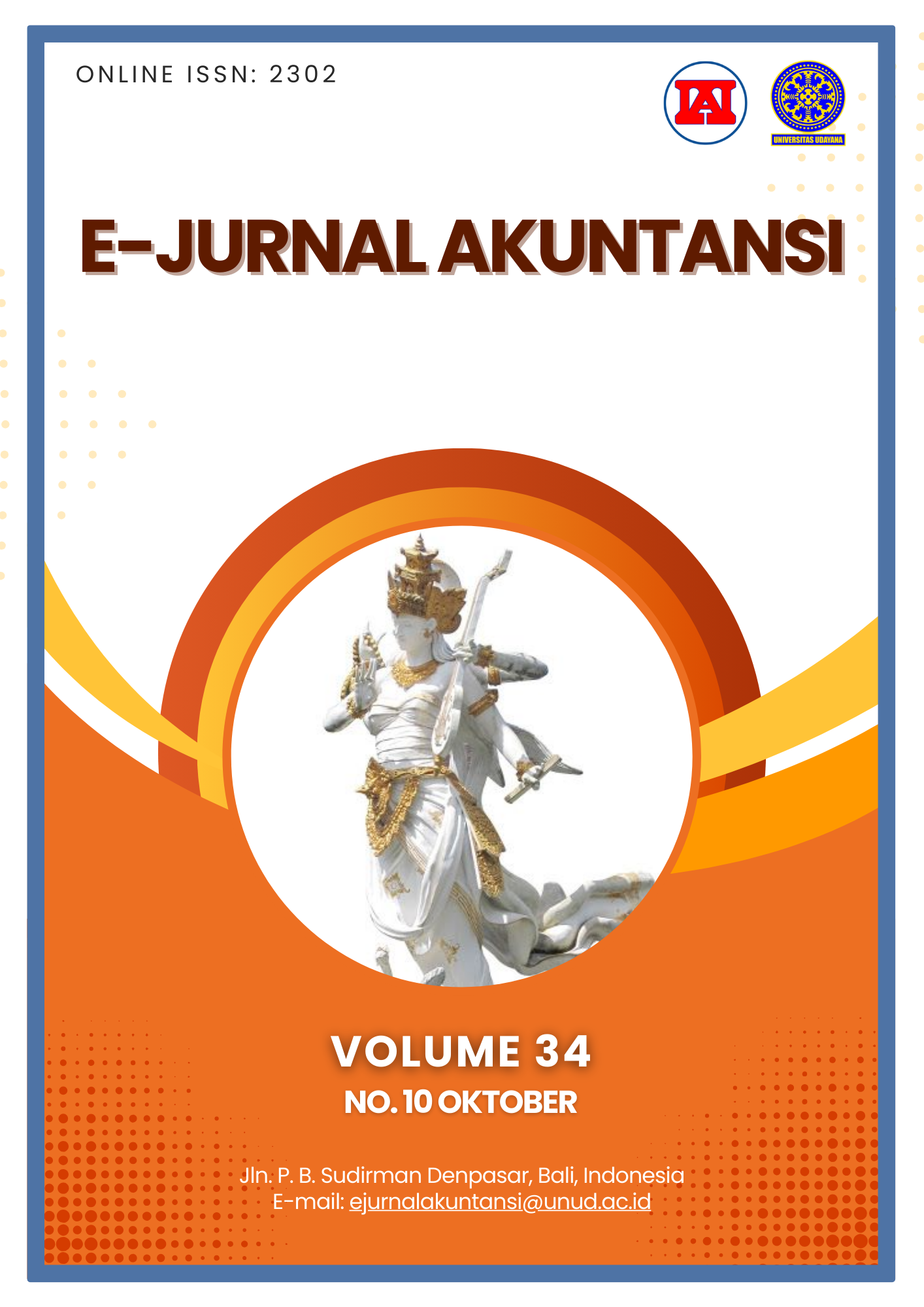Determinants of QRIS Adoption Among Students: The Roles of Knowledge, Ease of Use, Financial Literacy, and Perceived Benefits
Abstract
This study addresses the phenomenon of a significant increase in QRIS usage in DIY (Daerah Istimewa Yogyakarta), despite its suboptimal adoption. The research aims to examine the influence of knowledge, ease of use, financial literacy, and perceived benefits on QRIS usage among students in DIY. Primary data were collected through a questionnaire distributed using a random sampling technique, with a total sample of 200 respondents. The analysis was conducted using multiple linear regression. The results indicate that knowledge and perceived benefits have a positive and significant impact on QRIS usage among students in DIY. Conversely, ease of use and financial literacy exhibit a positive but statistically insignificant effect on QRIS usage. However, when analyzed simultaneously, knowledge, ease of use, financial literacy, and perceived benefits collectively have a positive and significant effect on QRIS usage among students in DIY. The findings of this study contribute to existing literature by providing insights into the factors influencing QRIS adoption. These results serve as a valuable reference for future research and can support initiatives aimed at optimizing the use of QRIS, particularly among students.
Downloads
References
Anggriani, L., Diana, N., Diah Fakhriyyah, D., Studi Akuntansi, P., Ekonomi dan Bisnis, F., & Islam Malang, U. (2023). Pengaruh Literasi Keuangan, Persepsi Kegunaan, dan Kemudahan Penggunaan pada Minat Penggunaan Quick Response Code Indonesian Standard (QRIS) Dalam Transaksi Keuangan (Studi Kasus Pada Mahasiswa FEB Unisma Tahun 2019). E_Jurnal Ilmiah Riset Akuntansi, 12(02), 837–848. http://jim.unisma.ac.id/index.php/jra,
Davis, F. D. (2019). Perceived Usefulness, Perceived Ease of Use, and User Acceptance of Information Technology. 13(3), 319–340.
Ernawati, N., & Noersanti, L. (2020). Jurnal Manajemen STEI Pengaruh Persepsi Manfaat, Kemudahan Penggunaan dan Kepercayaan terhadap Minat Penggunaan pada Aplikasi OVO. Juenal Manajemen STEI , 3 (2)(02), 2442–4080. www.bi.go.id/id/statistik
Haq, M. Z., Hakim Handoko, L., & Asysyad Rasyid, A. (2023). Analysis of the Influence of Perceived Benefits, Easiness and Risk on Students’ Interest in Using QRIS. Journal of Business Management and Islamic Banking, 02(2), 95–116. https://doi.org/10.14421/jbmib.v2i2.2075
Kusumawardhani, R., Cahyani, P. D., & Ningrum, N. K. (2020). Analisis Perbedaan Tingkat Literasi Keuangan Antara Mahasiswa Fakultas Ekonomi Dan Mahasiswa Fakultas Non-Ekonomi. Mix Jurnal Ilmiah Manajemen, 10(1), 15. https://doi.org/10.22441/mix.2020.v10i1.002
Laloan, W., Wenas, R., & Loindong, S. (2023). Pengaruh Kemudahan Penggunaan, Persepsi Manfaat, dan Risiko Terhadap Minat apengguna E-Payment QRIS pada Mahasiswa Fakultas Ekonomi dan Bisnis Universitas Sam Ratulangi Manado. Jurnal EMBA : Jurnal Riset Ekonomi, Manajemen, Bisnis Dan Akuntansi, 11(02), 375–386. https://doi.org/10.35794/emba.v11i02.48312
Nurdin, Difa Restiti, & Rizki Amalia. (2021). Pengaruh Media Sosial Terhadap Pengetahuan Tentang Quick Response Code Indonesian Standard (Qris). Jurnal Ilmu Perbankan Dan Keuangan Syariah, 3(2), 157–173. https://doi.org/10.24239/jipsya.v3i2.55.157-173
Octavianingrum, P. E., Suprihati, & Kusuma, I. L. (2023). The Effect Of Financial Literacy , Perceived Usefulness and Perceived Ease Of Use To Interest In Use Indonesian Quick Response Standard ( QRIS ) For Creative Industry ( MSMEs ) In Surakarta City. 2023(4), 1565–1573.
Pasya, M. B., Nurdin, E., Yusuf, S., Made, S., & Purnaman, N. (2023). Annual Conference The Influence of Perceived Benefits and Ease of Use Quick Response Indonesian Standard ( QRIS ): TAM Theory Approach. 2, 251–260.
Permani, E. C., & Mujiyati. (2023). Pengaruh Pengetahuan, Persepsi Manfaat, Persepsi Kemudahan penggunaan dan Persepsi Risiko terhadap Keputusan Menggunakan Dompet Digital (QRIS) Pada Mahasiswa Entina. Repository. https://eprints.ums.ac.id/116836/
Rachmadani, & Nursiam. (2019). The Influence of Profitability, Leverage, Company Size and Dividend Policy on Company Value (Empirical Study of Manufacturing Companies in the Food and Beverage Sub-Sector Registered in BEI for 2019-2021)id 2 *Corresponding Author. Management Studies and Entrepreneurship Journal, 4(4), 4092–4101. http://journal.yrpipku.com/index.php/msej
Rahmawati, A., & Murtanto. (2023). Pengaruh Persepsi Manfaat Dan Persepsi Kemudahan Penggunaan Uang Elektronik (Qris) Pada Mahasiswa Akuntansi. Jurnal Ekonomi Trisakti, 3(1), 1247–1256. https://doi.org/10.25105/jet.v3i1.16032
Santoso, V., & Nainggolan, R. (2023). Technology Acceptance Model (TAM): The Effect Of Financial Literacy On Effectiveness Of Using QRIS On MSME Owners In Indonesia. 2023(4), 1770–1779.
Seputri, W., & Yafiz, M. (2022). QRIS sebagai Alat Transaksi Digital Generasi Z: Analisis Faktor. Adzkiya : Jurnal Hukum Dan Ekonomi Syariah, 10(2), 139. https://e-journal.metrouniv.ac.id/index.php/adzkiya/article/view/5259
Shohib, N. C., Susilo, K. E., & Nugroho, A. (2022). QRIS Sebagai Alat Transaksi Di Wisata Pantai Selatan Malang Dengan QR Code. Jurnal Ilmu Komputer Dan Bisnis, 13(2a), 102–109. https://doi.org/10.47927/jikb.v13i2a.386
Silaen, M. F., Manurung, S., & Nainggolan, C. D. (2021). The Effect of Using Indonesian Standard Quick Response Code (QRIS) on Increasing Sales to Merchants in Pematangsiantar City. Budapest International Research and Critics Institute (BIRCI-Journal): Humanities and Social Sciences, 4(4), 11140–11148.
Simatupang, A. D. R., & Ramadhani, A. F. (2023). Analisis pengaruh persepsi kemudahan dan kemanfaatan terhadap minat pelaku umkm dalam menggunakan qris bank syariah indonesia. Journal of Islamic Economics, Business and Finance, 13(1), 61–73.
Siregar, D. S., , Agama, K., Indonesia, R., Tarbiyah, F., & Ilmu, D. A. N. (2021). Determinan Minat Menggunakan Quick Response Indonesian Standard (Qris) Skripsi (Issue 1).
Sugiharti, H., & Maula, K. A. (2019). Pengaruh Literasi Keuangan Terhadap Perilaku Pengelolaan Keuangan Mahasiswa. Accounthink : Journal of Accounting and Finance, 4(2), 804–818. https://doi.org/10.35706/acc.v4i2.2208
Syaifuddin, A. F., & Rahman, K. (2022). Analisis Faktor Yang Mempengaruhi Minat Penggunaan Qris Sebagai Metode Pembayaran Pada Masa Pandemi. INASJIF IndonesianScientific Journalof Islamic Finance, 1(1), 1–21.
Tandio, T. (2016). Pengaruh Pelatihan Pasar Modal, Return, Persepsi Risiko, Gender, Dan Kemajuan Teknologipada Minat Investasi Mahasiswa. E-Jurnal Akuntansi Universitas Udayana, 16.3, 2316–2341. https://ojs.unud.ac.id/index.php/Akuntansi/article/download/21199/15415

This work is licensed under a Creative Commons Attribution-ShareAlike 4.0 International License.

















